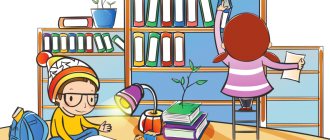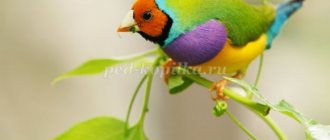Long-term planning of experimental activities in the middle group
Yulia Vinogradova
Long-term planning of experimental activities in the middle group
GBDOU kindergarten No. 6 of Krasnoselsky district of St. Petersburg
Plan
self-education teacher
Vinogradova Yu. V.
Topic: “ Experimentation as a means of developing cognitive activity in preschool children.”
Saint Petersburg
Relevance.
Throughout preschool childhood, along with play activities activity is of great importance in the development of the child’s personality, in the processes of socialization , which is understood not only as the process of acquiring knowledge, abilities, skills, but, mainly, as the search for knowledge, the acquisition of knowledge independently or under the tactful guidance of adults, carried out in the process of interaction, cooperation, co-creation.
The reasons for the intellectual passivity of children often lie in the limited intellectual impressions and interests of the child. At the same time, being unable to cope with the simplest educational task, they quickly complete it if it is carried out in a practical manner or in a game. Research activities are of great interest to children. Everything that the child hears, sees and does himself is assimilated firmly and for a long time.
The modernization of education taking place in the country, the peculiarities of state policy in the field of preschool education at the present stage, have necessitated important changes in determining the content and methods of organizing the pedagogical process in kindergarten. In the children's activities of a modern child one can see the desire for integration, that is, the unification of different types of activities , such as experimentation , the creation of micro- and macro-projects, improvisation; modern children are attracted by the process itself, the possibility of exercising independence and freedom, realizing ideas, the ability to choose and change what - then yourself.
Research activities and experimentation help build relationships between the teacher and children on the basis of partnership. Therefore, I chose the topic of self-education “ Experimentation as a means of developing the cognitive activity of preschoolers”
While working on this topic, I set myself
tasks:
— create conditions for children’s research activity;
- encourage and guide children’s research initiatives, developing their independence, ingenuity, and creative activity.
of experimentation to children , develop cognitive abilities;
— study methodological literature on this topic;
- help the child master the appropriate vocabulary, the ability to accurately and clearly express his judgments and assumptions;
- generalization of knowledge on this topic.
Long-term plan for experimental activities in the middle group for the 2016-2017 academic year.
No. Name goal
October
1. “We smell, we taste, we touch, we listen. » To consolidate children’s ideas about the sense organs, their purpose (ears - to hear, nose - to breathe and determine the smell, fingers - to determine the shape, surface structure, tongue - taste).
2. “Why does everything sound?” Lead children to understand the causes of sound: vibration of an object.
3. “Transparent water. “Identify the properties of water: transparent, odorless, flows, has weight.
4. “Sorceress water. » Reveal that water takes the shape of a vessel, dissolves some substances, and can become colored.
November
5. “What objects can float?” Give children an idea of the buoyancy of objects, that buoyancy does not depend on the size of the object, but on its heaviness.
6. “Foam pillow. » Develop in children ideas about the buoyancy of objects in soap foam.
7. “Air is everywhere. “Detect air in the surrounding space and reveal its properties: invisibility, weightlessness.
8. "The air works"
. Give an idea that air can move objects.
December
9. “The light is all around us. » Determine whether light sources belong to the natural or man-made world.
10. “Light and shadow. » Introduce the formation of shadows from objects, establish the similarity between a shadow and an object, and create images using shadows.
11. "Frozen Water"
. Reveal that ice is a solid substance that floats. Melts, consists of water.
12. "Rescue Bubbles"
. Reveal that air is lighter than water, it has power.
January
13. “Multi-colored balls. » Obtain new shades by mixing primary colors.
14. “We will see everything, we will know everything. » Introduce the assistant device – the magnifying glass and its purpose.
15. “Ice blocks” Teach children to pour water into various forms, watch through the window how the water becomes covered with a crust of ice and freezes, familiarize them with the quality of water.
February
16. “Magic mitten. » Reveal the properties of a magnet to attract certain objects.
17. “Water mill. »Give an idea that water can set other objects in motion.
18. "Ringing Water"
. Show children that the amount of water in a glass affects the sound it makes.
19. "Guessing Game"
. Show children that objects have weight, which depends on the material.
March
20. “Sunny bunnies. » Understand the cause of sunbeams. Learn to reflect light with a mirror.
21. “What is reflected in the mirror?” Introduce the concept of “reflection”
, find objects that can reflect.
22. "Magic Sieve"
. Introduce children to the method of separating pebbles from sand, small grains from impurities using a sieve.
23. "Colored sand"
. Introduce children to the method of making colored sand and teach them how to use a grater.
April
24. “Grape Submarine.” Show how a submarine and fish float up and rise.
25. “What plants love. » Help establish the dependence of the growth and condition of plants on their care.
26. "Growing Seeds"
. Identify the factors necessary for seed germination.
27. "What's burning?"
To clarify children's knowledge about the ability of fire to burn paper, wood and the inability to burn metal, water, glass.
May
28. “Black and White” Introduce the influence of sunlight on black and white; develop observation and ingenuity.
29. “Stubborn objects. » Introduce the physical property - energy.
30. "The Journey of a Droplet"
. Introduce children to the water cycle in nature and explain the cause of precipitation.
31. "Sand and Clay"
. Teach children to compare sand and clay, identify their properties
Forms of work Deadlines Practical output, note.
Creation of a children's laboratory in the group and equipping it with equipment. During a year
Studying methodological literature During the year Compiling a card index of experimental games .
Development of plan for children on the topic of self-education. September. Forward planning .
Sharing experience. Second half of the year. Open classes.
Working with parents. Throughout the year, Consultations, participation in projects, wall newspapers, moving folders, photo exhibitions.

